Self-drive off-road 4x4 thrills on the Sani Pass
Himeville - KwaZulu-Natal - South Africa
Conquering South Africa’s highest off-road mountain pass
Would you want to drive up the infamous Sani Pass?
Winding up or down the Sani Pass is a great way to get 4x4 off-road thrills
As part of our Drakensberg Road Trip, we allocated a day to drive up the pass. It was something we wanted to do for many years, and finally had the opportunity. The weather was a bit temperamental, but we chose a good day, although it was hazy and quite cold on the top of the mountain.
The Sani Pass is notorious amongst South African 4x4 enthusiasts. These fanatics aspire to self-drive and conquer this steep gravel pass.
Are you one of them?
Legend has it that it is meant to test your off-road skills. But is that the only reason? It also has stunning views along the route as well as from the top. Then, of course, there is a legendary pub at the top of the pass.
One of the few places to park and take photographs or enjoy the view of Sani Pass
Having only driven up the pass once, I’m no expert. I was the passenger, so technically I didn’t drive, because hubby wanted all the excitement for himself – only kidding, but I would have happily driven it. I do have a few tips for you, though, if you’re keen to do it. I’m not going into the technical side of things – there are enough 4x4 forums for that. I’m just suggesting a few practical tips.
Great views!
Not the clearest of days, but we could still appreciate the view
A long drive ahead
Tips for driving the Sani Pass:
1. Border requirements.
Pack your passport. When entering any foreign country, you require your passport. The same goes for driving the Sani Pass. Why, you may ask. Close to the bottom of the pass you will cross the border and exit South Africa and will need to have your passport stamped. At the top of the pass you will enter Lesotho where your passport will be stamped again. Make sure you take the necessary documents required for the duration of your stay in Lesotho. Some foreigners may need visas. At the time of writing. the border was open between 6am and 6pm.
Papers for your vehicle. We didn’t require ours, perhaps because we were only there for a couple of hours, and we’re South African citizens, but if you intend staying in Lesotho you’ll need them. Either way, you will have to pay a nominal Lesotho road tax fee, as per the size of your vehicle.
We weren’t the only ones seeking off-road thrills
2. Take warm gear.
Jackets, caps, scarves and possibly gloves. There is a sign at the pub on the top of the Sani Pass that advises you how to park and hold onto your door in the wind. That to me is an indication that it is often extremely windy, as it was when we were there. Even in summer you might need a warm jacket.
3. Make sure you have enough fuel.
The last place to fill up on the South African side is in Himeville. There is no fuel at the top of the pass. In fact, there is nothing between the border posts, except beautiful scenery, gravel roads, vehicles, some pedestrians and occasionally livestock.
4. Deflate your tyres.
The terrain is rough and even though you can manage on hard tyres, it does help to reduce the pressure slightly and make your drive just a tad less uncomfortable. It also assists in preserving the road just a little longer. Engage in 4-wheel drive.
5. Don’t try to break the world speed record by rushing up the pass.
Drive slowly and enjoy the views. How long does it take to drive up the pass? It is actually very difficult to drive fast up the pass, but I’m sure there are some that do it regularly. Give yourself about 2 hours to get to the top, depending on your interests. Leave enough of a gap between your vehicle and the one in front of you when driving. That way you won’t have to drive in their dust.
You might want to stop along the way, to take photographs or give your bones a rest from rattling around on the gravel. I could have done with a sports bra - or corset – another item to add to the packing list! Places to stop and park are scarce, but there are a few. Allow yourself sufficient time to get back down again, before the border closes.
Enjoy the view
One of the places to park and stretch your legs
Can’t get enough of that view!
Surrounded by mountains and rocks
Plenty of vehicles driving up the pass
Breathtaking!
6. A 4x4 vehicle with good clearance is a necessity.
There are plenty of signs before you reach the South African border to warn you that you need a 4x4. However, 2×4 vehicles can be given approval at the bottom of the pass by South African immigration if they are suitable. Bikers are known to go up the pass too.
I don’t think that’s a 4x4
Neither is this. In 1956 Sy Symonds drove a VW Beetle up the Sani Pass
7. Accommodation.
It is possible to stay overnight but you would have to book. There is no large, upmarket hotel or resort at the top of the pass, but Sani Mountain Lodge provides accommodation in bungalows, backpackers rooms or camping. (I’ll skip the camping in winter, thanks!)
Accommodation of bungalows or backpackers rooms at Sani Mountain Lodge
8. What to do when you’ve summited the Sani Pass.
You’ve reached the top, so what do you do once you’re up there? You could turn around and go all the way down again, but that would be a waste, so how about some exploring?
There is the highest pub in South Africa, (because it’s not technically in Lesotho) where you can have lunch or a few drinks, but I’d go easy on the alcohol, if you’re still driving down again. Yeah, yeah, I know, downhill doesn’t sound quite as bad, but believe me, you could still slip down the pass, trailblazing a new route.
Nearly at the top
We’ve made it!
You can drive slightly further into Lesotho to Kotisephola or Black Mountain Pass. It is tarred with a beautiful road. However, caution is still the order of the day, because the wind speed can be high, and the road can be treacherous in snow or icy conditions. The pass itself is approximately 30 kilometres in length, so I wouldn’t venture much further if your time is limited.
Heading deeper in to Lesotho towards Kotisephola or Black Mountain Pass
Enough warnings
Think they’re trying to warn us?
The highest point on Kotisephola or Black Mountain Pass
9. Driving down the Sani Pass.
When driving down, it seems somehow easier, but the same principles that you used going up, apply for the downhill. I would still be cautious and take it slowly, as you’d be driving around those same hairpin bends and it wouldn’t take much to go over the edge if you’re too hasty or overenthusiastic or hit a slippery spot.
Vehicles driving down the Sani Pass
10. Still want to go up the pass, but you don’t have a vehicle?
There are tour groups that will take you up the mountain, so all is not lost if you don’t have transport or the need to drive up yourself.
11. When should you drive up the pass?
I’ve heard weekends can be busy as would South African school holidays. If you’d like to be part of the crowd, you’re welcome but we chose to do it in the week. It was still fairly busy. Likewise, if it has snowed or rained and you have no experience driving in off-road conditions, I would reconsider.
Roadworks on the South African side at the bottom of the pass
First impressions, not too bad, apart from the roadworks
Our experience of driving the Sani Pass
We chose to drive the Sani Pass as part of our Drakensberg road trip. Most women would want to celebrate their birthdays being pampered in some spa in an exotic location. Not me – I chose to have my bones rattled and my spine jolted for most part of the day. Ok, I admit, only a few hours of the day.
Just a bit of useless information: As far as I know, it is the longest section of no-man’s land between South Africa and a bordering country. There you go – you’re welcome. Correct me if I’m wrong.
In my humble opinion, it’s not the most technically challenging 4x4 road to drive on. The road was in fairly good condition when we were there. However, that could change in the blink of an eye. The terrain is definitely rough and towards the top the hairpin bends are sharp, steep and narrow, with very little to no space to pass another vehicle. In wet and slippery or snowy conditions it would be challenging.
Wouldn’t want to be a the bottom of the pile of rocks rumbling down the mountain
It is not the most difficult road we’ve driven on, but it is a long, steep section of off-road or gravel and it is still necessary to exercise extreme caution when driving it. Many vehicles have had accidents when they’ve taken a hazardous but unintended shortcut. They ended up in a heap, wedged between rocks, off the road, halfway down the slopes. Not a place where you want to find yourselves.
The height of the Sani Pass is approximately 2874m depending on where you are standing. That is a high altitude.
They are busy with roadworks on the South African side of the Sani Pass. It is only for a few kilometres, but there can be a short delay to allow the trucks and machinery to pass.
Although it was in the pipeline to tar the road many years ago, it will still take a while for the entire pass to be tarred.
Houses built from stone for Basotho settlements on the plateau of Sani Mountains
Lesotho
Talking of tar, as we crossed the border into Lesotho, we drove onto a beautiful tar road, in excellent condition.
Icy snow to add to the cold
On the plateau the rocky alpine is bleak and battered by the wind. The only signs of vegetation were low-growing herbaceous shrubs and grass. I think very little else would grow there.
Icy snow and ominous weather
We drove a further 10 kilometres on the tarred road to the top of Kotisephola or Black Mountain Pass. On the slopes and at the top of the pass there was still snow tucked away in places. Dotted along the way were some neatly packed stone cottages and ring shaped walls for livestock.
Shelter from the icy windswept winters
Life up there must be tough for the Basotho people living in this harsh and unforgiving area, as it is miles from anywhere and no matter which direction you go, neither route is short.
10 Quick Tips to Pin Later:
Tips or advice from other bloggers
Because I’m no fundi I’ve decided to ask other bloggers for tips or advice when driving up the Sani Pass.
Monique van der Walt says:
“You need a 4x4 plus an experienced driver. Vehicles going up have right of way. The roads are narrow and if you are descending, it is unsafe for two vehicles to pass each other. You need to stop and let ascending vehicle pass. Don’t panic if you get stuck. There are people at the top that will assist you. There are many friendly travellers on Sani Pass that will be quick to lend a hand.”
Read Monique’s account of her trip up the pass in the snow - Sani Pass snow squealing, Southern Drakensberg.
You can find Monique on Twitter and Instagram
Photos courtesy of Monique
Roxanne Reid says:
“Don’t forget to check weather conditions on Sani Pass before you make the ascent. If it has been raining or snowing, conditions may be slippery – especially on the tight turns near the top - or you may get snowed in. Talk to the locals about the advisability of making the trip if weather conditions are poor. Even if the weather is perfect, be prepared for rough patches where you may have to reduce speed to just 20km/h. Take it slow and enjoy the scenery.”
Read Roxanne’s version of 3 Lesotho passes you have to drive
Driving in Lesotho:
If you want to drive deeper into Lesotho, I have a few more tips for you.
Anje Rautenbach from Going Somewhere Slowly spent a few days driving solo around Lesotho. She has some great tips about exploring the Mountain Kingdom.
Check out Anje’s social platforms on Instagram and Twitter
Follow me on these social media platforms
It is still possible to reach the top of the Sani Pass without a 4x4 vehicle, but you’d have to go the long way round.
Cindy Alfino from 3 Kids 2 dogs and 1 old house will tell you how:
“OK, so we’re busy travelling SA,Lesotho, Mozambique, Namibia and Botswana in a 1974 Campervan and a Ford Figo. We’ve been on the road for 2 months and spent about 2 weeks in Lesotho, we did Mohale’s Hoek (dino prints), Malealea (donkey trekking to the san paintings), Roma (bike tracks), Semonkong (highest single drop waterfall), Afriski (but in the “Summer” season - no snow) and then Sani Top (with lots of snow YAY!).
We thought that we wouldn’t be able to make it to Sani Top in our little Figo but it’s totally possible. I mean I wouldn’t dare try the Sani pass in my Figo but you don’t have to risk that to enjoy the top. The Black Mountain pass is also totally doable, and you also knock off the highest point of Lesotho at the same time.
Beware of Altitude sickness. We had spent 2 weeks in Lesotho before hitting Sani and we still suffered. We didn’t know what hit us, feeling hot and cold, racing hearts and just generally not feeling great. Didn’t know it was a thing, but it really is. It’s worse at night so be prepared.
Everyone was saying that only the diesel cars would suffer but our Figo was frozen too. Try and start it a good few hours before you want to leave and open the bonnet to the sun to get it thawed.
”
Photos courtesy of Cindy
If my blog has piqued your interest about driving the Sani Pass, take a look at these quick links for further reading.
Quick links:
Quick guide to Lesotho – visa free travel for South Africans
Basotho blankets and Basotho culture in Lesotho - How Dare She
More road trip reading:
12 Irresistible Reasons to Take a Road trip for your next Adventure
Save on Pinterest to read later:
Did you know you can book your own experience through Get Your Guide?



















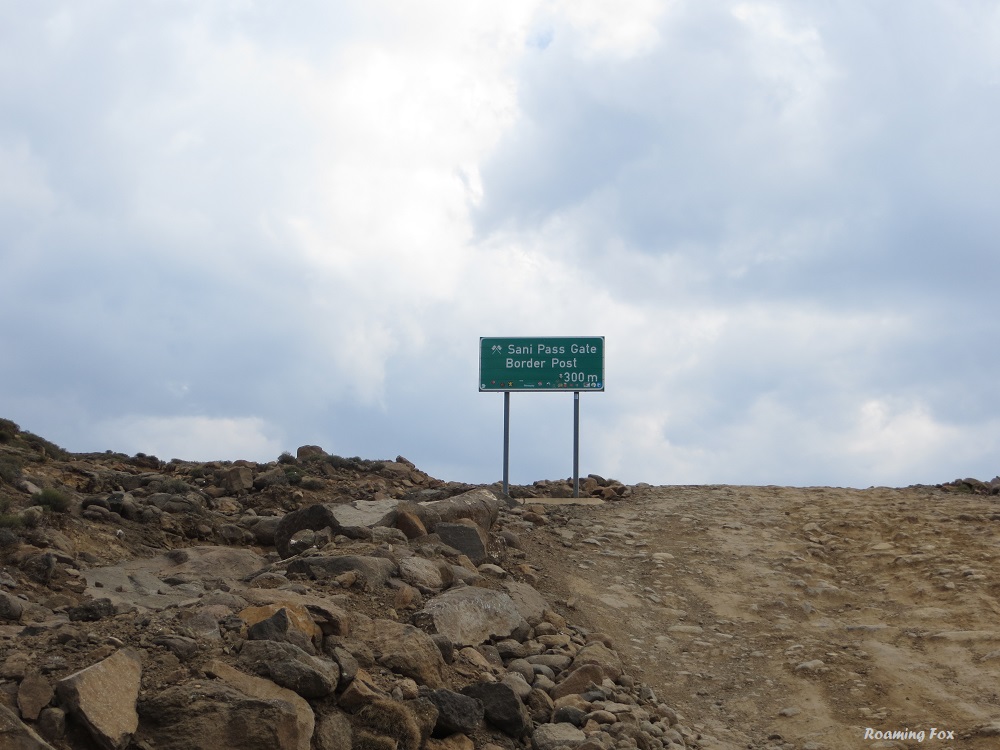






















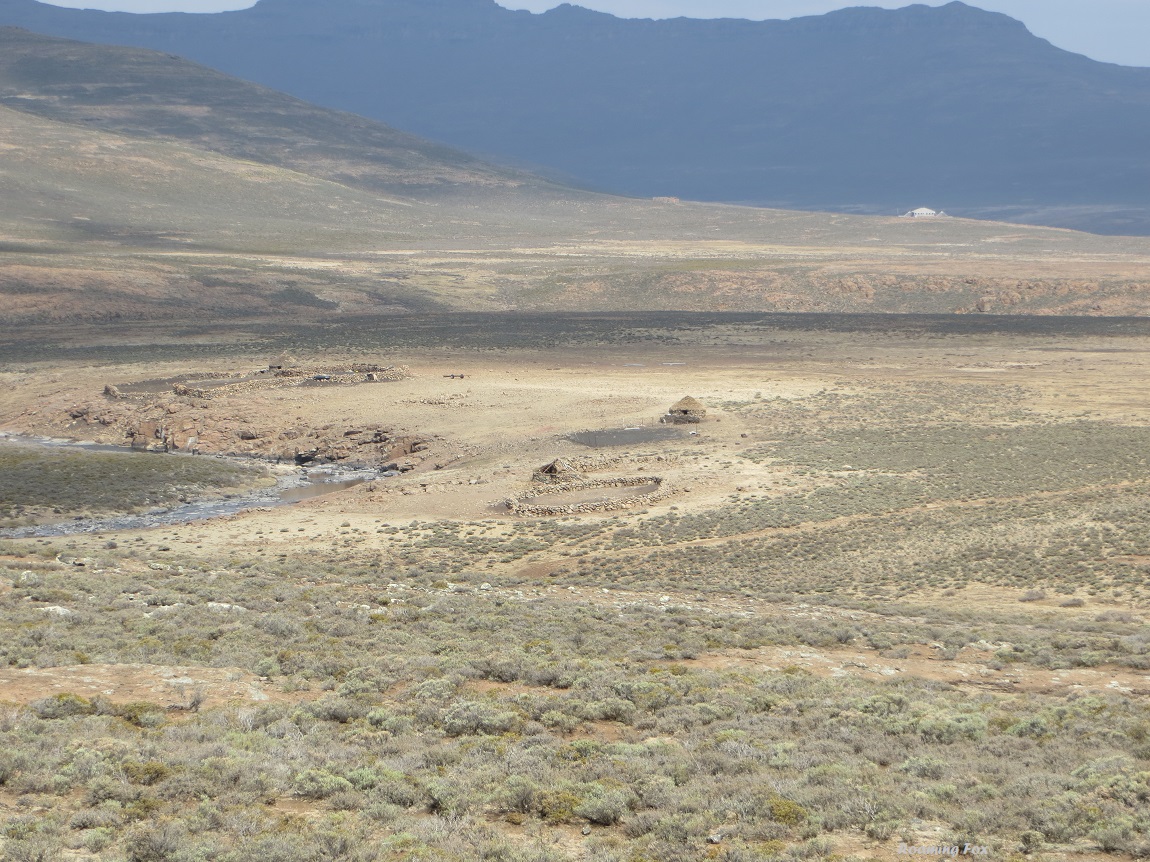

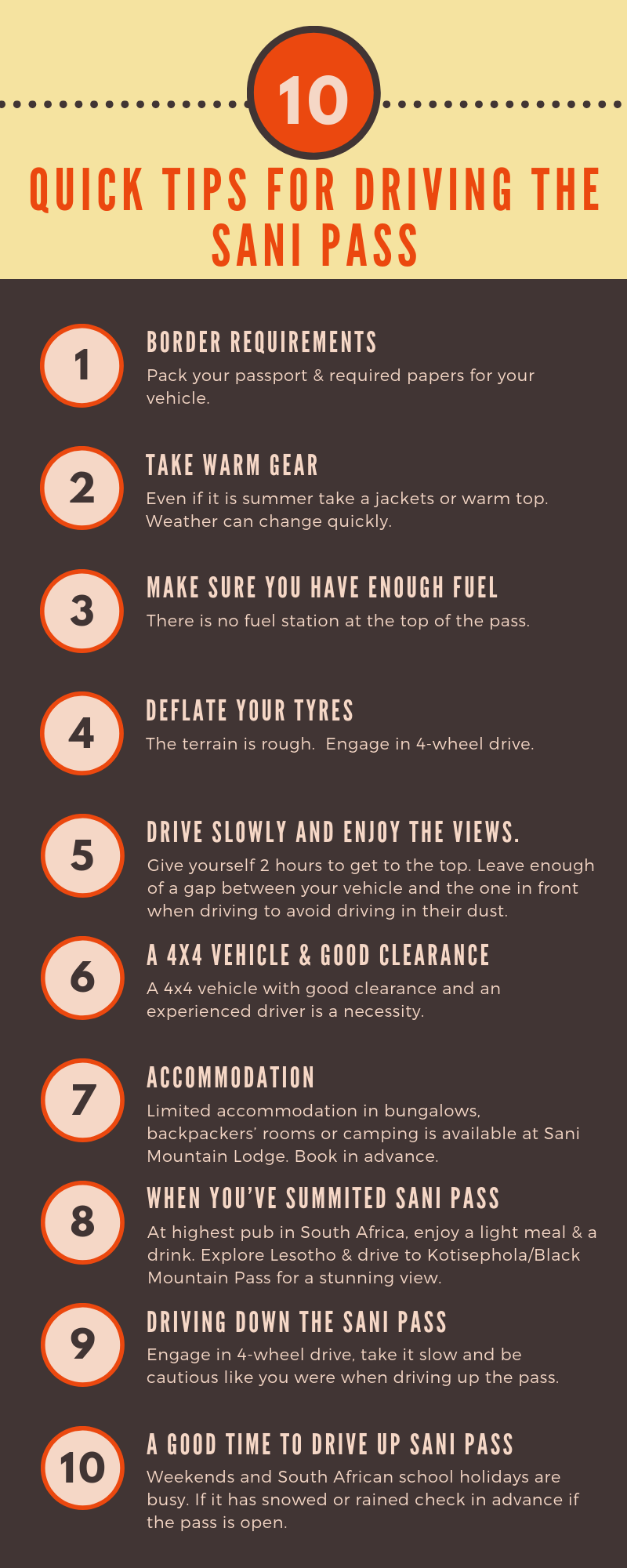

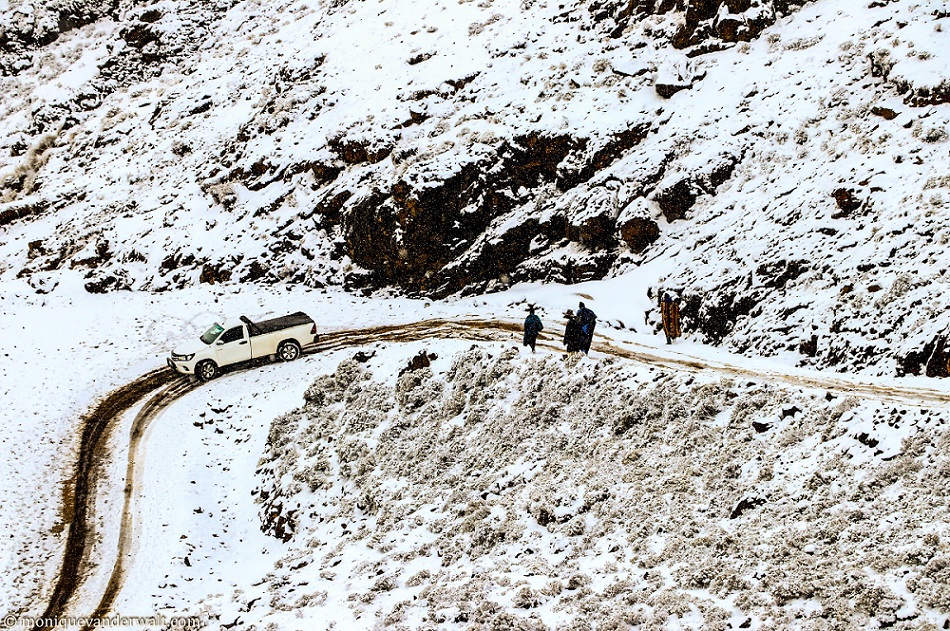










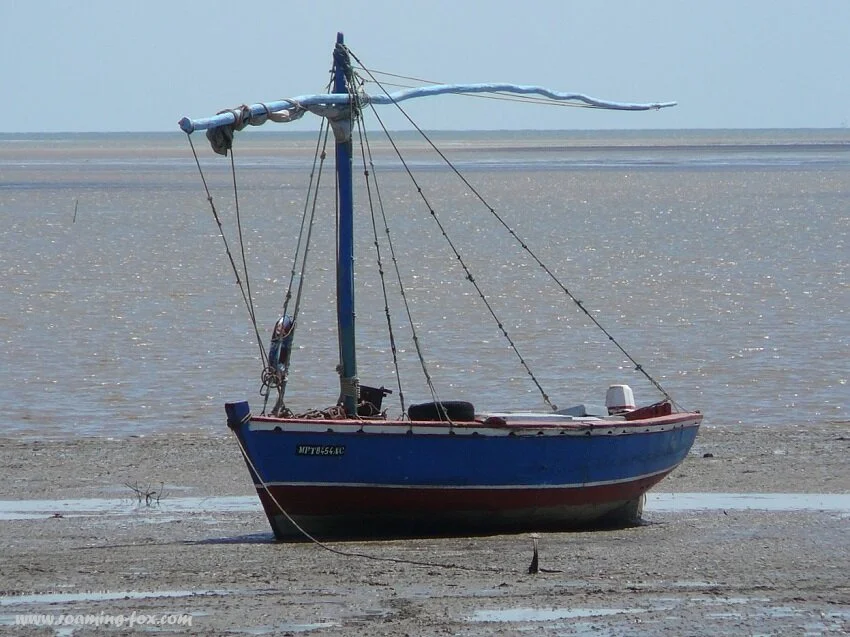
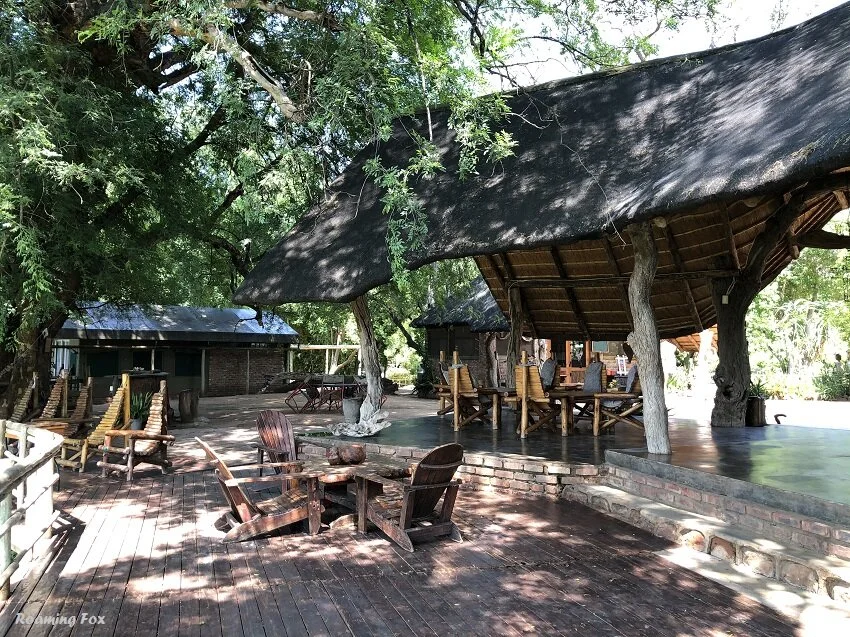


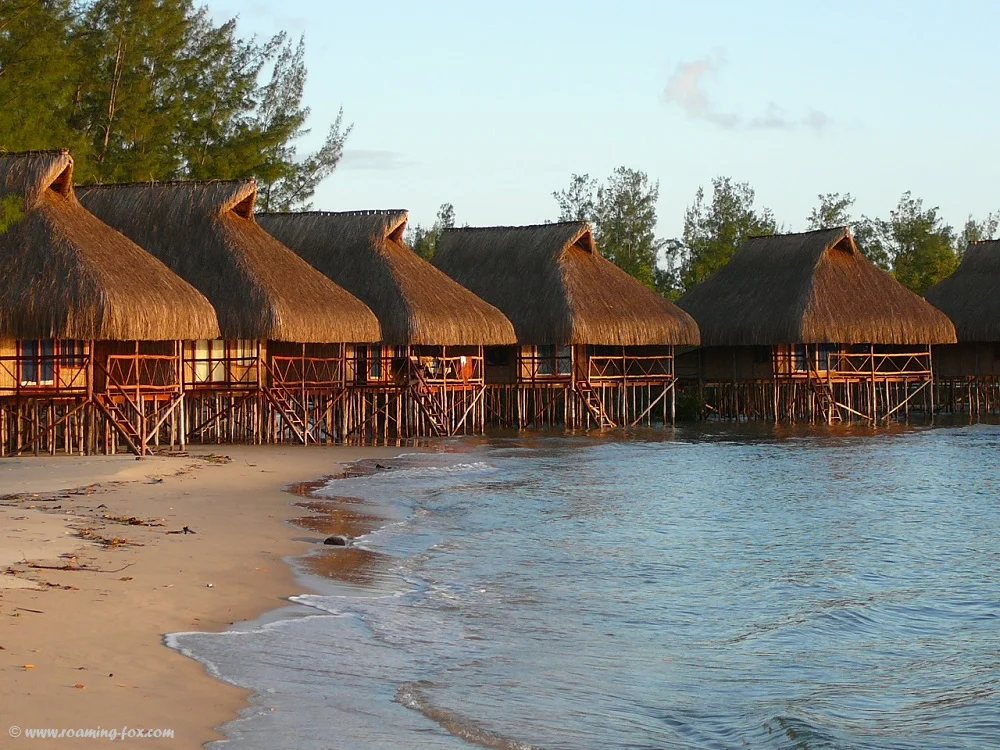
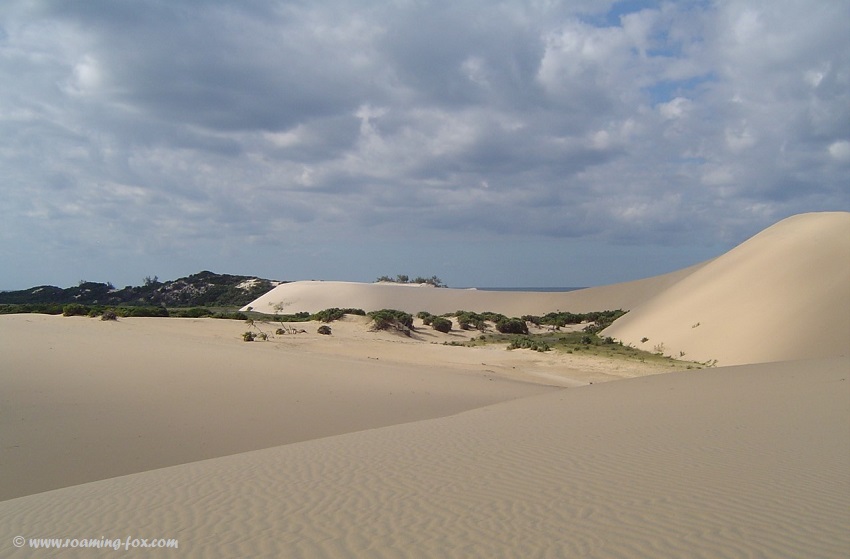

What does travel, adventure and safari have in common? They are all out of the ordinary activities from work or routine. Although not essential qualities, all of these can be unusual and exciting or daring.